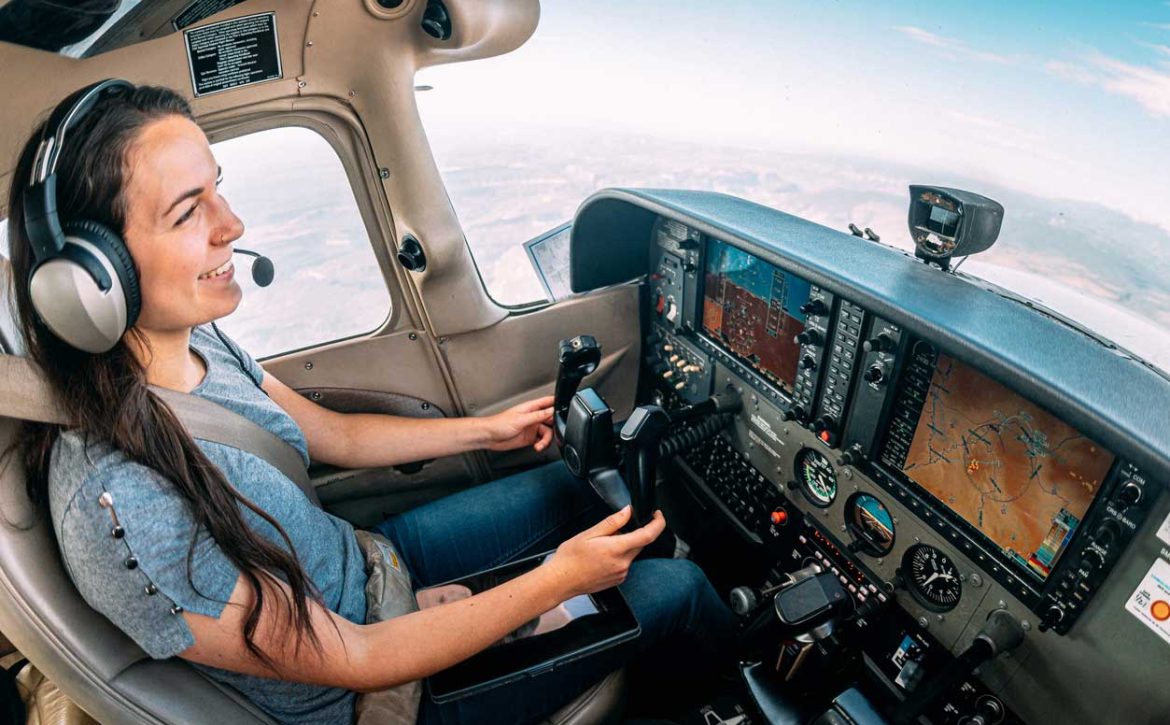I Was a New Private Pilot, Flying Small Aircraft In Busy Airspace
The Night I Flew a “Heavy” … Make that a “Cessna Heavy”
Shawn Arena
This article is similar in nature to the previous flight experiences that I have documented for you. As a newly minted private pilot, this experience taught me how to successfully navigate the fast-paced ground and air portions of flying small aircraft into one of the busiest airports in the country, with a little help from my friend/flight instructor/passenger.
My First Night Journey Flying Small Aircraft Into Congested Airspace
It was around 1988-89, and my private pilot certificate was barely bent in my wallet (only 2-3 years old) when I participated in one of the most interesting and challenging flight experiences to date. You might have remembered from another writing that my initial flight experiences were out of a flight school based at John Wayne Airport (SNA) in Southern California.
I accepted an offer to participate in flying a Cessna 172 in a flight of three aircraft to Los Angeles International Airport (LAX) to tour a Lockheed L-1011 aircraft flown by Delta Airlines (the head aircraft mechanic for Delta at the time also flew privately with the flight school). I was to fly the second of three legs on our sojourn from SNA to LAX to ONT and then back to SNA. It was really fascinating to be in the ‘jump seat’ (i.e. backseat pilot-passenger) on that leg from SNA to LAX.
It was a summer night and most pilots will tell you that flying small aircraft at night is one of most serene experiences you can imagine, and between the twinkling lights of the cities below and the multicolored lights at an airport, it is pretty cool and also it is easier to spot other traffic.
It became very ‘real’ upon our approach into LAX. All seemed fine until the tower controller informed the pilot to ‘expedite approach, traffic is a Boeing 727 on 3-mile final.’ To say we landed and taxied off of runway 25L ‘hot’ (i.e. a lot quicker than a usual approach) was an understatement, but to all passengers, things went fine as we rolled to our stop under the left wing of the L-1011 parked at the gate for the night … yeah, you heard that right, under the wing!
Boy, It Is Tough Getting a Word In Around Here
The tour was awesome. For those not familiar with the L-1011, it was Lockheed Aircraft Company’s answer to McDonnell Douglas’s very successful DC-10. The L-1011 was state of the art at the time and one of the second generation commercial aircraft in automation and technology; featuring one of the first automated flight directors, area navigation (RNAV), configuration warning, and auto-land systems … a pretty cool airplane for its time!
OK, it was now my time to fly. Some of you ‘veteran’ pilots may remember that before headsets became the norm, when flying small aircraft, communications with air traffic control was via a handheld microphone attached to a cord right under the instrument panel. So it was with this Cessna 172 as well. I prepared for my standard communication chain with ground control and then tower control, when it became really apparent that this was to be no ‘typical’ departure process. When I would look out the left window and see that the BOTTOM of passing aircraft were HIGHER than the top of my aircraft, I knew it was to be interesting. Talk about living in the land of the giants!
After mentioning to the flight instructor / passenger in the right seat, “Boy, what does one have to do here to get any controller’s attention?” he did something that to me, at the time, was crazy (but it worked). He grabbed the microphone and stated: “Los Angeles Ground, this is Cessna 123 November Papa HEAVY request taxi.” A quick primer to those not familiar with ATC parlance in aircraft classification, the ATC system classifies commercial aircraft as ‘Large’ or ‘Heavy.’ According to FAA’s Air Traffic Control Policy, Order JO 7110.65V, a Large aircraft is determined by maximum certificate takeoff weight (MTOW) of 31,000 pounds but no more than 300,000 pounds. To be considered a Heavy, the MTOW is greater than 300,000 pounds.
After his bold statement, the ground control frequency went dead. The ground controller snapped back: “Last call say again!” to which my ‘passenger’ replied: “You heard me, we want to get out of here!” To say the least, our taxi and subsequent takeoff went off as clockwork. Imagine that!
Why Are You Doing “S” Turns on the Runway?
After our ‘adventures in departure’ from LAX, my flight into ONT was anticlimactic. I was able to identify ONT from about 20 miles out (I mean, it’s almost impossible to NOT notice two 12,000 ft. lit runways). As I lined up with runway 26L, there seemed to be lights EVERYWHERE, as if giving us several lanes to choose from on the runway. As I decelerated, but before we cleared the active, I began some ‘S’ turns to avoid (what I thought) were light posts on the runway. My ‘passenger’ flight instructor shouted out “Why are you doing “S” turns on the runway?” My answer was “I’m trying to avoid those lights sticking up.” to which he replied, “Ah, son, those are flush-mounted runway lights to assist aircraft in landing at night.” In my mind I thought, “they’re assisting me alright, almost to the point of distraction!”
Final Thoughts
Many of you by now are chuckling or flat out bursting out in laughter, but to me, this experience of night flying small aircraft into busy airspace was a great learning experience, one that still resonates some 28 years later. In aviation, it’s all about learning. A good pilot is always learning. Safe journeys!
Get Started With Your Flight Training Today
You can get started today by filling out our online application. If you would like more information, you can call us at (844) 435-9338, or click here to start a live chat with us.




 The definition of accelerated flight training in comparison to regular flight training suggests that a flight student will be able to complete any one of the pilot training programs within a reduced time frame while still adhering to the number of hours required by the
The definition of accelerated flight training in comparison to regular flight training suggests that a flight student will be able to complete any one of the pilot training programs within a reduced time frame while still adhering to the number of hours required by the 


